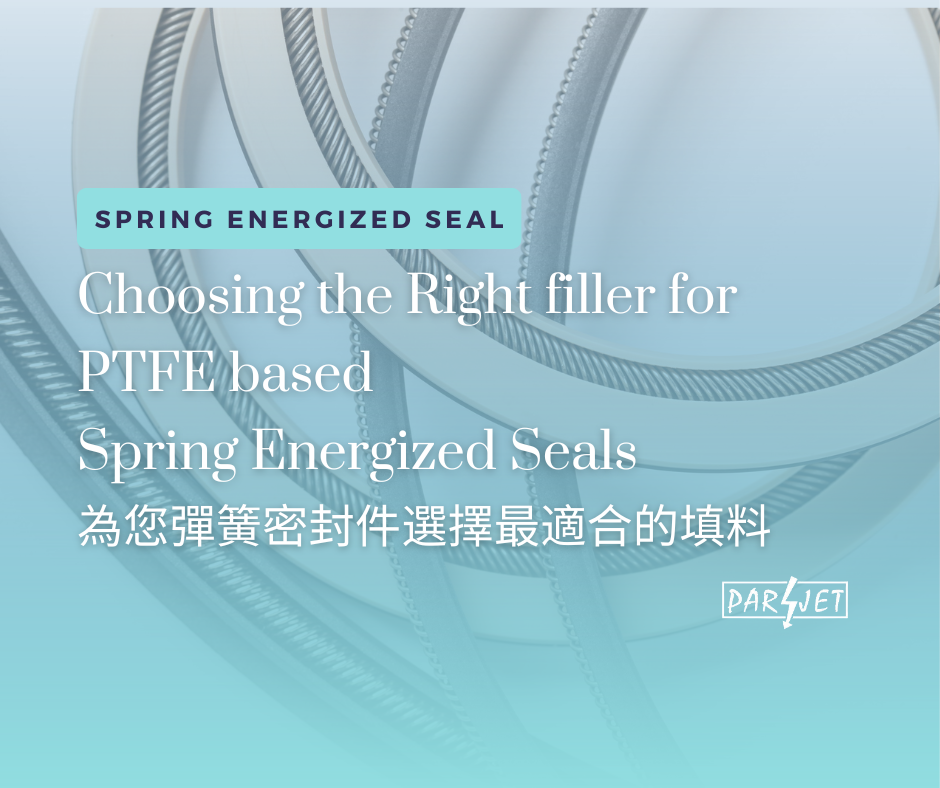
Choosing the Right filler for PTFE based Spring Energized Seals: A Comprehensive Guide
Spring Energized Seals (HiPerSeal®) play an important role in various industrial applications. It provides reliable sealing solutions in harsh environments. The chosen material for these sealing components is the key to their performance, life expectancy and compatibility with specific operating conditions. Besides the different spring types, such as Canted Coil Springs, Cantilever Springs and Helical Springs, the different fillers can influence the mechanical properties of the seal which is an important element while designing your spring energized seal. This article will introduce the tips on choosing the most suitable material for your PTFE based Spring Energized Seals.
1. Identify and Understand the Operating Conditions
Before choosing a material for your spring energized seals, it is crucial to thoroughly understand the working environment. Factors that can affect the decision includes, temperatures, sealing media, pressure, the presence of abrasive substances and more. This information can guide the selection process by highlighting the required material properties for the most optimal sealing performance.
2. Understand PTFE properties
Polytetrafluoroethylene (PTFE) is a well-known polymer with excellent temperature resistance, low coefficient of friction, chemical resistance and self-lubrication characteristics. However, PTFE can have limitations under pressure therefore the fillers are added to overcome the challenges to modify its properties to specific application requirements.
3. Understand Common Fillers for PTFE-Based Spring Energized Seals
- Glass Fiber:
- • Advantages: Improved wear resistance and strength, increased dimensional stability, and only minimal effect on electrical properties
- • Applications: high wear potential, medium duty hydraulic applications
- Carbon fiber:
- • Advantages: Improve wear resistance, lowers creep, increase flex and compressive modulus, decrease coefficient of thermal expansion.
- • Applications: Short strokes with high frequency, applications with high thermal cycling, water hydraulic
- Graphite:
- • Advantages: Low friction, good thermal conductivity, and chemical resistance.
- • Applications: Sealing solutions in high-temperature and chemically aggressive environments.
- Bronze:
- • Advantages: Extrusion resistance, improved thermal conductivity, reduce deformation under load, creep resistance
- • Applications: High pressure and temperatures, hydraulic applications, heavy mechanical stress
- Polyimide (PI):
- • Advantages: Enhanced wear resistance, improved creep resistance.
- • Applications: semiconductor manufacturing, high-performance applications
4. Identify the factors that can affect your Filler Selection:
Wear Resistance:
Under the application that require high resistance in wear property, it is essential to choose filler that can increase the wear resistance, especially with abrasive working conditions. Common fillers to improve the wear resistance include glass fiber, carbon fibers, and bronze fillers.
Friction Properties:
Graphite and polyimide fillers are known for their low friction characteristics. When considering the desired friction properties of the seal, it is necessary to select a filler that aligns with the application requirements.
Temperature Stability:
Evaluate the operating temperature range and choose fillers that can withstand the required temperature without compromising the sealing performance.
Chemical Compatibility:
Ensure that the chosen filler material is chemically compatible with the substance that the seal will be exposed to in its operating environment. Most common fillers used for corrosive media include graphite and glass fiber.
5. Testing and Validation:
Before finalizing the material selection, it is crucial to performance testing to evaluate the mechanical property of the PTFE filled Spring Energized Seal. This step ensures that the chosen material can perform as expected and meets the specific requirements of the application.
Conclusion:
Choosing the right filler for your PTFE based spring energized seals is a critical decision that directly impacts the efficiency and reliability of the entire operation. By carefully considering the environment, material properties, and specific application requirements, Parjet can advice on the material that maximizes the performance of your spring energized seals.
If you are unsure about which filler or material to choose for your application, contact us and our engineering team will be happy to assist.





